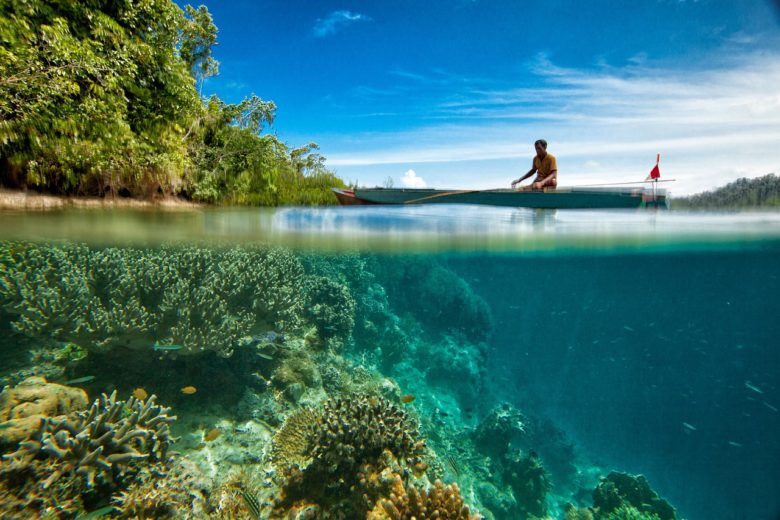
Deadly Threat to Coral Reef From Disease
We are reader-supported. When you buy through links on our site, we may earn affiliate commission.
In 2013, researchers off the coast of Christmas Island discovered something shocking. The coral reef they’d visited only five years earlier was skeletal and dead, its tissue destroyed and bone-like. The cause of the deterioration was a disease called white syndrome, and even now, in 2019, scientists are still baffled. It’s one of many threats to coral reef systems around the world.
While white syndrome has many of the qualities of coral bleaching — draining the life and color from a coral reef — the disease is far more deadly. Instead of stressing the coral until it expels its algae, white syndrome kills a reef completely, leaving nothing behind but a bare structure of what it once was.
What is white syndrome, and how can researchers hope to address the problem? Let’s dive into the strange and mysterious depths of this growing phenomenon.
The History of White Syndrome
The team who found white syndrome off Christmas Island in 2008 weren’t the first to discover the disease. It had been ravaging coral reefs since at least 1998, when Australian researchers began to systematically track its spread. Since then, it’s affected coral around the world, suggesting it isn’t a localized problem.
In the Caribbean and the Philippines, across the Great Barrier Reef and the Red Sea, white syndrome has eaten away at coral reefs without a discernible pattern, save for a few small details. Scientists still struggle to understand the disease, unaware of its origins or cause. That said, there are a few things we’ve learned.
The Facts About White Syndrome
White syndrome only affects the Acropora genus of corals, which might seem beneficial, were it not for the fact that Acropora corals are the most abundant and diverse in the world. They’re the dominant species in Indo-Pacific reefs, common today, but are likely to vanish from many areas, according to Jean-Paul Hobbs.
A coral ecologist, Hobbs was a member of the team who studied the reefs off Christmas Island. He saw firsthand the devastation of white syndrome on the area’s ecosystem when the disease killed up to 96 percent of the Acropora plate coral living in the island’s reefs. With their death, the habitats they created died as well.
The reason why Acropora coral is susceptible to white syndrome remains unknown, though there’s speculation. Hobbs claims Acropora corals are among the fastest genus in the world, and the energy they invest to sustain their growth might leave less strength to fight off disease and protect against environmental changes.
In truth, white syndrome is an umbrella term for multiple conditions, and there isn’t a single pathogen to blame. Bacteria, protozoans and even parasitic worms are all linked to the disease. Without knowing more about the cause of the problem, it’s difficult to make meaningful progress toward finding a long-term solution.
At the present moment, we’re aware that outbreaks of white syndrome are associated with warm water, suggesting a rise in the phenomenon as climate change continues to heat our oceans. While it may seem like there’s little we can do, that hasn’t stopped scientists from fighting on the frontlines of this growing issue.
The Battle Against White Syndrome
When white syndrome spread through the corals of southeast Florida and the Upper Florida Keys, the state issued an emergency $1 million grant to government agencies, nonprofits and scientists to address the issue. Unfortunately, it wasn’t as easy as providing the proper funding, and the disease continued unabated.
In truth, there are many factors behind the death of corals, such as agricultural runoff and pollution from sewage. Perhaps the largest contributor is climate change, which weakens already susceptible organisms, and with acidity levels increasing 26 percent since the start of the Industrial Revolution, the pressure is intense.
Corals in this toxic environment are now subject to white syndrome, and scientists are limited in their options in how to approach the disease. They can push for green initiatives that reduce greenhouse gases, focus on improving water quality in affected areas or implement a new short-term solution.
In the battle against white syndrome, scientists have devised a method that involves a broad-spectrum antibiotic. A team cuts as much dead and diseased tissue from a coral colony as they can before applying the antibiotic in small doses to the affected areas. This strategy has shown incredible promise in controlled trials.
While reliance on antibiotics is potentially risky, there are few alternatives that are nearly as effective. This solution’s success might not prove feasible, as it takes far too much time to prune diseased tissue and apply antibiotics, making it prohibitive in every location where white syndrome has hit.
Looking Toward the Future
Coral bleaching already represents a substantial risk to the future of the world’s reefs, and with white syndrome sweeping the oceans, the situation appears grim. Still, it’s necessary to remain positive and optimistic moving forward, and trust in the ingenuity and dedication of scientists and environmental organizations.
Though corals are in danger, there’s still time to act. The battle isn’t over yet, and as researchers make slow but steady progress, we move closer toward finding a solution to save our reefs and restore ecological harmony.
Share on
Like what you read? Join other Environment.co readers!
Get the latest updates on our planet by subscribing to the Environment.co newsletter!
About the author

Jane Marsh
Starting from an early age, Jane Marsh loved all animals and became a budding environmentalist. Now, Jane works as the Editor-in-Chief of Environment.co where she covers topics related to climate policy, renewable energy, the food industry, and more.





